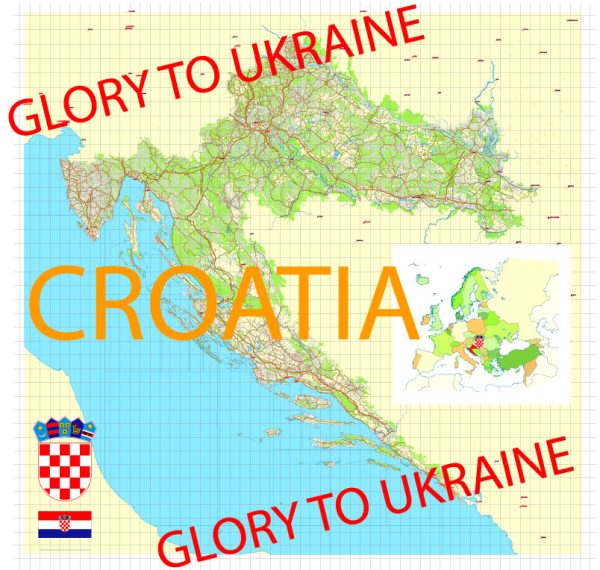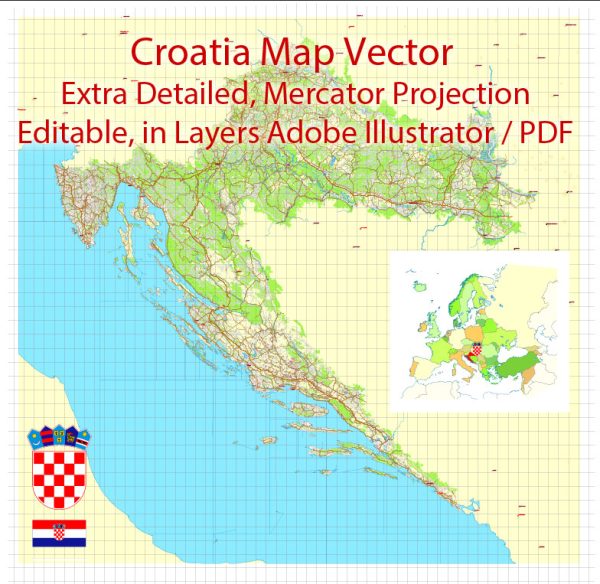Croatia boasts a rich cultural and historical heritage, and its architecture reflects a blend of different influences throughout the centuries. Here are some of Croatia’s most famous buildings and landmarks:
- Diocletian’s Palace (Split):
- Built by the Roman Emperor Diocletian in the 4th century, this palace is a UNESCO World Heritage Site and serves as the historic core of the city of Split. It features well-preserved Roman architecture and is home to a mix of residential, commercial, and religious structures.
- Dubrovnik City Walls (Dubrovnik):
- The medieval city of Dubrovnik is renowned for its well-preserved walls that encircle the old town. The walls date back to the 13th century and offer stunning views of the Adriatic Sea, red-tiled roofs, and the city’s historic architecture.
- St. James Cathedral (Šibenik):
- A masterpiece of the Renaissance, this cathedral is a UNESCO World Heritage Site. Built entirely of stone, it features intricate sculptures and friezes, with a unique blend of Gothic and Renaissance styles.
- Plitvice Lakes National Park:
- While not a single building, this national park is a natural wonder and a UNESCO World Heritage Site. It is famous for its interconnected lakes, waterfalls, and lush greenery, creating a breathtaking landscape.
- Zagreb Cathedral (Zagreb):
- The Cathedral of the Assumption of the Blessed Virgin Mary is a landmark in the capital city of Zagreb. With its twin spires, the cathedral is a symbol of the city and an impressive example of Gothic architecture.
- Pula Arena (Pula):
- This well-preserved Roman amphitheater is one of the six largest surviving Roman arenas in the world. Dating back to the 1st century, it once hosted gladiator contests and today serves as a venue for concerts and festivals.
- Euphrasian Basilica (Poreč):
- A UNESCO World Heritage Site, this early Christian basilica dates back to the 6th century. Known for its well-preserved mosaics and Byzantine architecture, it is an important religious and historical site in Istria.
- Rector’s Palace (Dubrovnik):
- Located in the heart of Dubrovnik’s old town, the Rector’s Palace served as the seat of the Rector of the Republic of Ragusa. Today, it houses the Cultural History Museum with exhibits on Dubrovnik’s history and culture.
- St. Mark’s Church (Zagreb):
- Situated in St. Mark’s Square in Zagreb, this church is known for its colorful tiled roof featuring the medieval coat of arms of Croatia, Dalmatia, and Slavonia. The church dates back to the 13th century.
- Trakošćan Castle:
- Nestled in the hills of northern Croatia, Trakošćan Castle is a picturesque fortress surrounded by a lake and a lush forest. It is one of the most well-preserved castles in the country, with a history dating back to the 13th century.
These landmarks showcase Croatia’s diverse architectural and historical heritage, ranging from Roman and medieval structures to Renaissance and modern influences.



 Author: Kirill Shrayber, Ph.D.
Author: Kirill Shrayber, Ph.D.